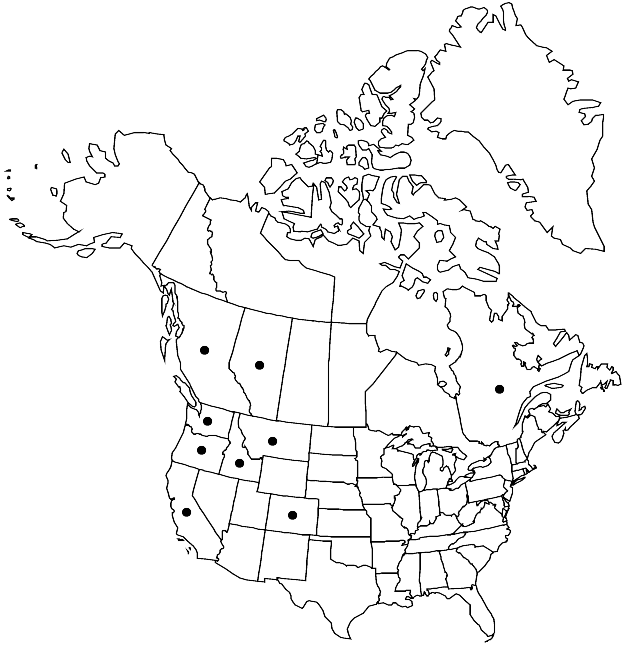Bryum calobryoides
Bryologist 89: 215, figs. 1–8. 1987.
Plants gregarious or in dense mats or cushions, brown proximally, bright green distally. Stems 0.5–1.5(–2) cm, strongly rounded julaceous. Leaves erect when moist, ovate to suborbicular, concave, 0.2–1(–1.2) mm; base green; margins weakly recurved proximally, plane distally; apex broadly rounded to acute, cucullate, not hyaline; costa not reaching apex to rarely percurrent, apiculus typically present in proximal leaves, absent in distal leaves, of more than 2 cells, sometimes hyaline; proximal laminal cells predominantly quadrate, 12–18 µm wide, 1–2:1; distal cells irregularly rhomboidal, (25–)30–75 × (8–)12–25 µm, 1–4:1, walls thin or somewhat thickened, not distinctly incrassate. Specialized asexual reproduction absent. Sporophytes unknown.
Habitat: Calcareous damp soil, rock
Elevation: moderate to high elevations (1000-3000 m)
Distribution

Alta., B.C., Que., Calif., Colo., Idaho, Mont., Oreg., Wash.
Discussion
Bryum calobryoides is easily distinguished by the small strongly julaceous stems, strongly concave leaves, and distal leaves broadly rounded and cucullate. An undescribed species from Colorado occurs in similar habitats but has a short-excurrent costa, acute leaf apices, and unusual, small, irregularly pyriform rhizoidal tubers with bulging cell walls. Collections previously identified as B. gerwigii (Müller Hal.) Limpricht from Alberta are B. calobryoides. Bryum gerwigii is a local waterfall form of Gemmabryum gemmiparum from central Europe.
Selected References
None.